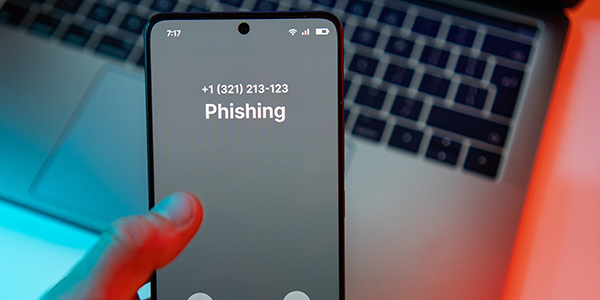Don’t Be the Next Victim of Callback Phishing
The next time you get an urgent message to call a number that’s not in your contact list, picture a toad. Would you pick up this notoriously ugly amphibian, kiss it, or carry it home? With the same disdain you might have for the toad, don’t call the number.
Between July and September 2024, Trustwave researchers detected a 140% surge in callback phishing attacks, also known as Telephone-Oriented Attack Delivery (TOAD). This method involves sending phishing emails to entice recipients to call a specific phone number for what seems like a legitimate purpose. It is not.
Why You Should Take Callback Phishing Attacks Seriously
The rising trend indicates that cybercriminals increasingly use this approach to deceive victims into disclosing sensitive information through seemingly legitimate emails. Callback phishing attacks can lead to financial losses, reputational damage, and the installation of ransomware.
According to the Proofpoint 2024 State of the Phish report, 67% of the 7,500 end users and 1,050 security professionals surveyed across 15 countries said they had fallen victim to a callback phishing attempt in 2023. With 10 million monthly TOAD messages going out, it’s not hard to see how this happens.
Recognize Tactics Used in Callback Phishing Attacks:
Initial Contact:
- The attacker contacts the victim through various communication channels, such as phone calls, emails, or text messages.
- The message conveys urgency or importance, baiting the victim into responding quickly without much thought. Examples include responding to gain access to an expired account, avoiding paying a late fee or updating critical personal information with HR.
Impersonation:
- The attacker poses as a legitimate organization, using logos, email addresses, or phone numbers that closely resemble those of trusted organizations.
- Learn about fraudulent calls targeting IT help desks in healthcare organizations, a recurring concern highlighted by the HHS through ongoing warnings. Read more here.
Pretext:
- The attacker establishes a pretext for the callback, citing reasons such as security concerns, account issues, or the need for immediate action to resolve a problem.
Request for Information or Action:
- The phishing attempt typically aims to obtain usernames, passwords, credit card details, or personal identification information (PII).
- Another ploy is to get the victim to click on a link, download an attachment, or perform some other action needed before calling back to resolve the matter that compromises their security.
Creating Urgency:
- Callback phishing attacks leverage a sense of urgency or fear, suggesting that failure to comply with the request will result in negative consequences such as account suspension, legal action, or financial loss.
Manipulation Techniques:
- Social engineering techniques may be employed to manipulate the victim emotionally, making them more likely to overlook red flags and comply with the attacker’s demands.
- Sophisticated callback phishing schemes will leverage Artificial Intelligence (AI) and put victims in a waiting queue to mimic a real experience with a customer service team.
- Learn how AI is upping the game for hackers and how to thwart their attacks in this article: AI Makes Phishing Scams Seem Legitimate.
3 Steps to Protect Yourself From Callback Phishing Attacks
- Go directly to the source through known, trusted means.
- Avoid using numbers or links provided in emails or texts.
- Report the phishing attempt.
- Don’t pick up the toad.
Learn How to Recognize Phishing Attempts
Your workforce must be well-prepared to recognize and respond to phishing attempts. PrivaPlan can help your organization identify gaps in phishing knowledge with simulated phishing testing and targeted training.




